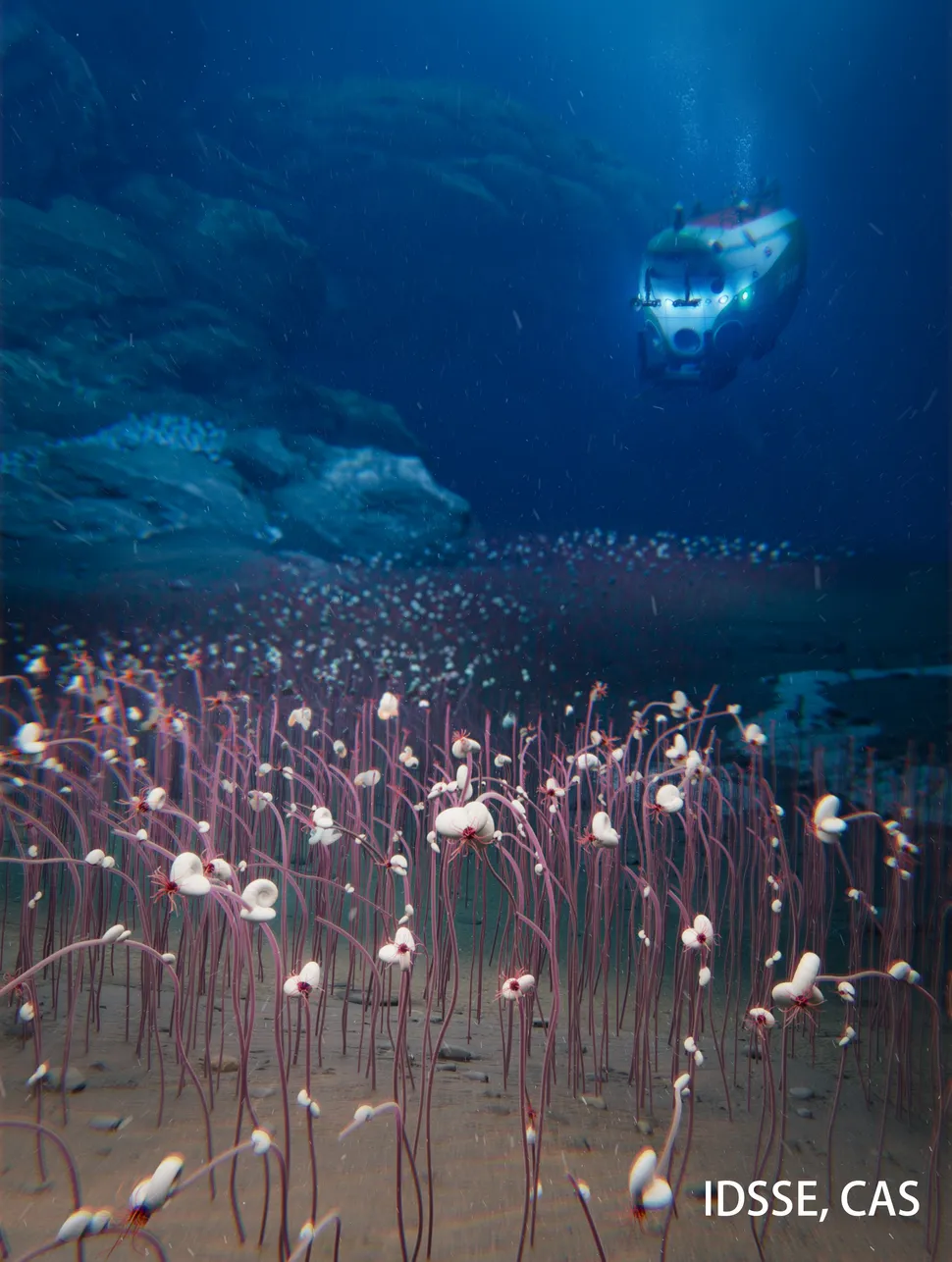Scientists have filmed odd communities of life flourishing deeper in the ocean than ever before. The chemosynthesis-based life-forms get their energy from chemical reactions, powered by gases seeping out of faults on the seafloor.
Ocean researchers have discovered thriving alien-like communities filled with tube worms, mollusks and spiky white creatures at the bottom of ocean trenches in the northwest Pacific Ocean.
The discovery, by a Chinese-led research team using a submersible at depths of around 31,000 feet (9,500 meters), represents the deepest and most extensive communities of chemical-reaction-powered life-forms known to exist on Earth.
These bizarre creatures survive in extreme conditions. They sustain tremendous amounts of pressure in total darkness and get their energy from chemical reactions rather than from the sun. The researchers’ findings, published Wednesday (July 30) in the journal Nature, suggest that this chemosynthetic life may be more widespread than scientists’ previously thought, according to a statement released by the journal’s publisher, Springer Nature.
Scientists have discovered new deep-sea communities thriving in some of the ocean’s most extreme environments — trenches in the hadal zone, which lies below 20,000 feet (6,000 meters). These deep trenches, among the least explored regions on Earth, hold mysteries still waiting to be uncovered.
“For a deep-sea scientist, visiting a place untouched by humans is incredibly exciting,” said Xiaotong Peng, study co-lead and deputy director at the Institute of Deep-sea Science and Engineering, Chinese Academy of Sciences. “It’s a rare opportunity to witness something entirely new — and what we found was truly remarkable.”
Since sunlight cannot penetrate the ocean’s deepest layers, life there must rely on processes other than photosynthesis. For years, scientists have theorized that hadal trench ecosystems could be sustained by chemosynthesis — a process in which organisms derive energy from chemicals like hydrogen sulfide and methane, rather than sunlight. Yet, documented examples of such communities in hadal regions have been scarce.
In this study, researchers explored sections of the Kuril-Kamchatka and Aleutian trenches at depths between 19,029 and 31,276 feet (5,800 to 9,533 meters). These areas are geologically active, home to earthquakes and undersea volcanic activity. Despite the extreme conditions, researchers observed vibrant ecosystems.
“The communities we found are dominated by siboglinid polychaetes (a type of tubeworm) and bivalves (a group of molluscs),” according to a statement from Springer Nature. “These organisms rely on hydrogen sulfide and methane leaking from tectonic faults as their primary energy source.”
While these discoveries mark exciting progress, the deep ocean remains vastly uncharted. A 2024 study revealed that humans have explored just 0.001% of the seafloor below 656 feet (200 meters) — an area roughly the size of Rhode Island. With so much still unknown, scientists believe the hadal zone holds many more secrets yet to be revealed.
